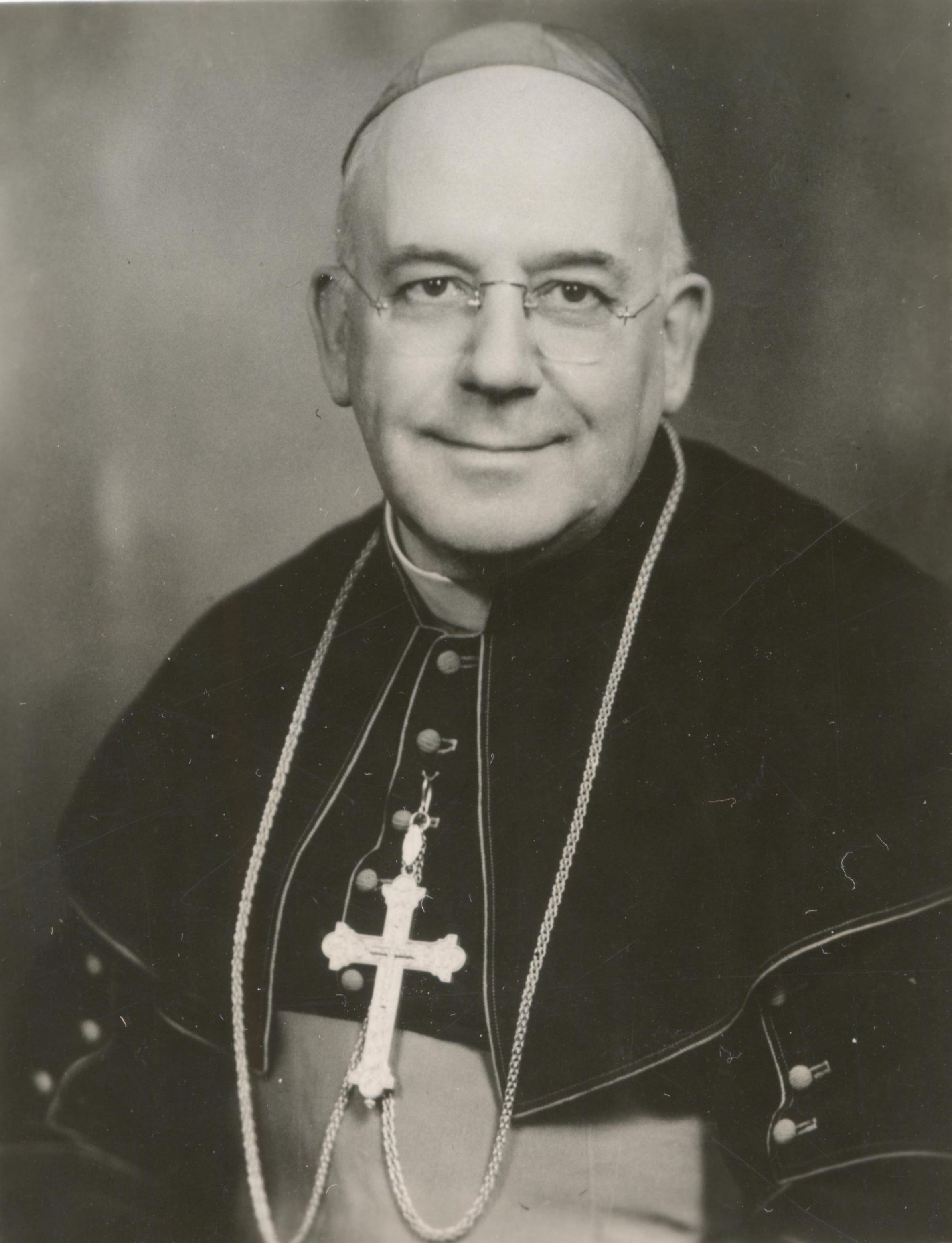Mgr. Philippe Desranleau 1941-1952
The fourth Bishop and the first Archbishop Mgr. Philippe Desranleau 1941-1952
Biographic record :
Born in Saint-Sébastien (Iberville County) on 3 April 1882, he was ordained priest on 26 July 1909 in Notre-Dame-du-Rosaire church in Saint-Hyacinthe by Mgr. Alexis-Xyste Bernard. He was at first a teacher in the Séminaire de Saint-Hyacinthe (1909-1911); he then became curate of the cathedral in that city (1911-1912). Studying in Rome (1912-1915), he obtained two doctorates : in philosophy and in canon law. He also obtained a doctorate at the Angelicum in Rome. After his return, he became curate of Saint-Hyacinthe’s cathedral (1915); then diocesan chancellor and secretary of Saint-Hyacinthe’s bishop (1915-1931); finaly, chaplain for the Soeurs de Saint-Joseph de Saint-Hyacinthe (1915-1921). Titular Canon (1924), he was decorated as an apostolic prothonotary (1928). He became curate of Saint-Hyacinthe’s cathedral in 1926. Vicar General of Saint-Hyacinthe’s diocese between 1926 and 1931, he became parish priest of Saint-Pierre de Sorel (1931-1938).
Elected coadjutor bishop (with right of succession) and administrator of Sherbrooke Diocese on 13 December 1937, he was ordained bishop of Sala and coadjutor of Sherbrooke on 24 February 1938 in Sherbrooke cathedral by Cardinal Rodrigue Villeneuve, o.m.i. He will become, ten years later, the first archbishop of the archdiocese of Sherbrooke. Fourth bishop of Sherbrooke, on 13 February 1941, he promptly called the first diocesan synod. He founded the Grand Séminaire de Sherbrooke (1939), the Noé-Ponton agricultural school (1946), the Sherbrooke École supérieure et de génie (1949) (Superior and University classes). This institution was the embryo of the future Université de Sherbrooke (1954). He invited many religious communities of sisters, fathers and friars to operate in the diocese : in parochial, academic, social, healthcare and cultural fields. He reorganized the Sanctuaire du Sacré-Cœur in Beauvoir, near Sherbrooke (1948). He was a constant promotor of the feminine cause in the Eastern Townships, by establishing in Sherbrooke a normal school (1942) and a classical college (1944) for girls. He founded the Séminaire St-Joseph de Sherbrooke (1950). He agreed to the foundation of the Société de réhabilitation (1943) to solve the problem of mental deficient children. In the early days of his episcopacy, he presided an Episcopal Commission on religious education in Québec elementary schools, which resulted in the reform of the Catholic catechism across the province. He was an intrepid defender of workers; let us remember the Asbestos strike (1949). He also gave a strong push to intensive Catholic Action.
On 2 March 1951, Rome set up a new ecclesiastic province in Sherbrooke; Mgr. Desranleau was appointed first archbishop of Sherbrooke. He was enthroned in his new functions on 10 May 1951. That same year, he autorized the expansion of the Séminaire de Sherbrooke. On 30 August 1951, he was victim of a road accident in Saint-Eustache. On 11February 1952, he signed, from his hospital bed, the document opening the beatification cause of Mère Marie-Léonie Paradis, founder of the Little Sisters of the Holy Family. During his episcopacy, he founded 33 parishes in the diocese. On 22 May 1952, he received the pallium from the hands of Mgr. Georges Cabana, his coadjutor. He died suddenly in Sherbrooke on 28 May 1952. He was buried in the crypt of the St. Michael Basilica-Cathedral.



